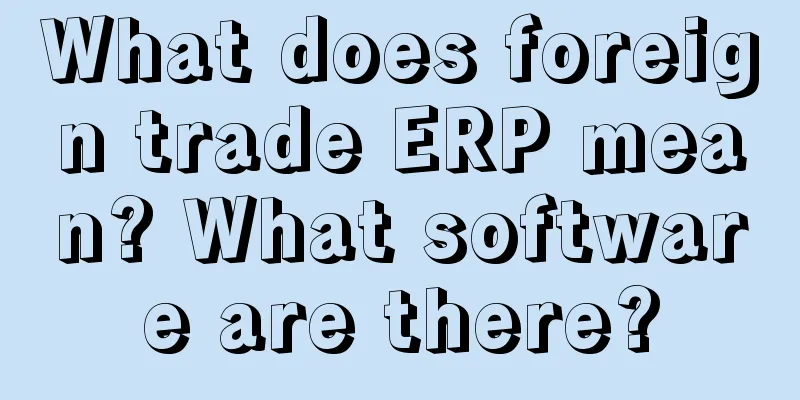The most comprehensive ChatGPT entrepreneurial direction! Who is the next ByteDance?

On March 24, OpenAI announced two major events in a lighthearted manner: First, ChatGPT is connected to the Internet. Second, OpenAI has opened up third-party plug-ins, and any developer can participate in the construction. OpenAI even provides a complete set of construction processes: "How to build your plug-in in ChatGPT" and open source it on Github. This means that the "APP Store" belonging to ChatGPT is really coming. In the afternoon of the same day, OpenAI also began to send out recruitment notices to recruit iOS and Android engineers. ▲Image source: OpenAI official website As Kai-Fu Lee said, "In the new AI 2.0 era, platform opportunities ten times larger than those of mobile Internet will be created." This is the construction of a new ecology, rather than a fight for a piece of cake. Under the ecology, there are countless entrepreneurial opportunities waiting for entrepreneurs to explore. At the Wenxin Yiyan launch conference, Robin Li also proposed three major industry opportunities under the big model: MaaS model as a service, vertical industry model and application development. Robin Li believes that compared with MaaS and industry models, application ecology is a more important and greater opportunity. In contrast, from the Internet era to the mobile Internet era, dark horses like ByteDance were born. In the era of transformation from digitalization to intelligence, there are countless eyes lurking in the dark night, intending to stir up the business landscape of all industries in the future. It is foreseeable that all current Internet and mobile Internet-based applications will be remade, but this is only the first stage. The reshaping of the "old APP" will be carried out simultaneously with the innovation of the "new APP", which is the left and right foot of the development of AI 2.0. "Self-quadrant" organizes various applications currently built abroad based only on the GPT-3 API interface, and classifies the 714 known applications, covering various aspects such as underlying AI training, underlying development, application development, etc., and has grown various industry applications, including social, efficiency tools, legal, audio and video tools, and even the seeds of 2B applications are beginning to grow. ▲Original from Quadrant, please indicate the source when reprinting With reference to the fast-growing companies abroad, Salesforce, the world's largest SaaS company, has started exploring B-side scenarios in enterprise CRM with OpenAI, and has conducted a trial run on some corporate users in its digital collaborative office software Slack. Microsoft has also launched Copilot, an Office package based on GPT-4, taking the first step towards promoting intelligent office. "High-energy chat tools, AIGC generation of graphic and text creation, Copilot, and the applications we see today are just the beginning of AI 2.0 capabilities," Kai-Fu Lee judged. From early February to early March, in just one month, the above-mentioned Demo library added nearly 200 applications. With the further externalization of ChatGPT's capabilities, from accessing the latest information to retrieving specific knowledge bases, and even being able to perform operations on behalf of users, the scale of applications will usher in an exponential explosion. The combination of each subdivided capability and the scenario has the potential to produce the next byte. 1. Use a hammer to find nailsThrough the review of these 714 apps, we found that the development of various types of applications was not "mature" in the early stages. Among the 714 application demos mentioned above, most are tool types, such as spreadsheets, writing assistants, audio and video generation, code-free development, etc. Each product corresponds to a certain sub-function, but lacks specific usage scenarios. For example, ChatPDF can drag and drop PDF files to search databases, extract key points, organize logic, etc., and adopt the model of Internet products. This function should appear at the bottom layer of certain financial report analysis software to form a back-end combination capability, which can capture, download, import and analyze financial reports to finally produce an analysis report. ▲Image from ChatPDF At present, mature applications are mainly concentrated in the early development of their own products, and the iteration after access to ChatGPT capabilities, such as SnapChat in the social field, search engine Bing, and office software Notion AI. However, the intelligence of these mature applications is another path. As intelligent office software, Notion AI obviously does not have a deep understanding of the scene compared to Copilot. The similarity is that both use "space" or "/" to wake up AI capabilities in office scenarios, and can ask questions and issue instructions to AI; but the difference is that Copilot's intelligence is an ecological capability that connects the entire Office family bucket, such as Word, PPT, Excel, and Outlook, making AI really like an office assistant. For example, Copilot can read Outlook emails, plan Word documents, and arrange Excel schedules to complete a project PPT without the user noticing. ▲The picture comes from Notion A senior product manager told "Self-quadrant": "To put it bluntly, now is a stage of 'looking for nails with a hammer'. The tools are here, but who will use them? How to use them? How to improve efficiency? These are the questions that entrepreneurs need to think about now. All PMs should have a sense of crisis. How to combine intelligence with scenarios is a core key point for future tests." In the early days, on the one hand, the products were immature, and on the other hand, the business model needed to be re-explored. Judging from the current model, many people want to apply the experience of the Internet and mobile Internet to smart products, but find that it almost doesn't work. A domestic college student team built the ChatMind product based on API. After being open for free for about a month, it currently adopts a subscription-based charging model. Its founder revealed to "Zi Quadrant": "The website is not stable and needs to be maintained by a dedicated person. Apart from manpower, it costs hundreds of yuan a day to maintain, including promotion on platforms such as Xiaohongshu. These are all costs." Currently, ChatMind is divided into a regular version and a Plus version, with monthly and annual membership fees. Members are not restricted in the number of uses and export formats. However, based on user feedback, the user conversion rate is not high after the fee is charged. "I started out of curiosity, but after trying it a few times, I found out that it started charging a fee, so I started to wonder if it was worth it. I might as well do it myself with Xmind," a ChatMind user said. ▲Image from ChatMind Not only ChatMind, NotionAI also currently adopts a similar charging method. The difference is that NotionAI charges according to the number of times the interface is called. Each new user has a reserve fund of US$5, which needs to be recharged after it is used up. "Subscription and payment based on number of accesses are essentially paying for tools, but I believe that payment should be based on results, and intelligent capabilities should be internalized into the product's genes. Not only products need innovation, but business models also need innovation," said the product manager. 2. 2C is the one who sees the excitement, while 2B is the one who sees the tricks"It's a good idea to use it in 2C scenarios, but whether it can really be effective depends on its implementation in 2B scenarios." Big companies obviously understand the application of ChatGPT better than small companies. An executive of an AI listed company began to think about how to implement it on the B-side when ChatGPT just became popular in early February this year. "The application of the B-side is more certain, and the logic of 2B is driven by pain points. After the education of the last digital era, as long as AI can solve one link, companies are willing to pay." This means that in the vast battlefield of intelligent enterprise applications, we are faced with the challenge of having to start intelligentization before completing digitalization. We use digitalization and intelligence as the two axes to draw a coordinate system for current applications. (The examples in the figure below are not comprehensive, but are just typical cases in each quadrant.) ▲Original from Quadrant, please indicate the source when reprinting The coordinates in the figure only represent relative values, not absolute values. The premise that can be made clear is that digitalization is the cornerstone of intelligent development, and the speed of intelligent innovation in tracks with a higher degree of digitalization is faster. For example, search engines, games, and social networking will all be in the first echelon of iteration. In particular, game design and production is the integration and output of the entire AIGC content, and also lays the environmental foundation for the metaverse. Of course, in the 2B track, the four industries with higher digitalization, namely advertising, marketing, finance, and e-commerce, will be the first to run out of the new intelligent paradigm. As for various digital tools, a certain trend is the intelligentization of SaaS. From any perspective, cloud-intelligence integration is the premise for future development. On the application side, the first to bring about change will be the entire SaaS industry. We can get some inspiration by referring to Salesforce's sales product Slack. According to CNN, Slack may be the largest application test of ChatGPT technology so far. When ChatGPT was still in the technical testing period, Slack provided it with a large amount of user data and technical feedback data. Open AI's official website shows that Slack is currently the only recommended partner of Open AI. ▲ChatGPT official website Judging from the application solutions provided by Slack's official website, ChatGPT technology has at least released potential space in many business processes such as customer service, sales, project management, marketing, and human resource management. At the same time, it is accumulating intelligent experience in many industries such as technology, media, financial services, retail, and education. According to the "self-quadrant" test, ChatGPT for Slack can currently extract the key content of the meeting, including key information of the materials, and organize them logically; it can also help HR screen the resumes of new colleagues; reply to emails according to prompts for each employee, generate summaries, and other demonstration functions. ▲Image source: Slack official website Each sub-scenario can be deeply explored. For example, in HR SaaS, ChatGPT can help HR conduct a preliminary screening of resumes with specific conditions, verify information and generate a preliminary report. ChatGPT can even form some targeted questions, conduct a preliminary interview with the interviewee, and then feedback the interview results to HR for a re-examination. This is also the focus of current intelligent development, which is to improve human efficiency rather than replace people. Whether it is the improvement of personal efficiency or the improvement of organizational efficiency and management efficiency, the measurement indicator of the degree of intelligence is also the degree of efficiency improvement, not how cool the technology is. Judging from the current response, DingTalk seems to have made some layout moves. In early March, DingTalk acquired the Notion-like all-in-one product "Wolai", and also emphasized that it wants to gradually explore the road of intelligent products and create China's first Notion AI. However, "Zi Quadrant" believes that DingTalk's focus should not be limited to office scenes. Since 2019, Alibaba Cloud and DingTalk have worked closely together to form a "Cloud-Ding Integration" strategy. DingTalk is an important tool for the entire Alibaba Cloud enterprise application direction. Similarly, in the era of intelligence, DingTalk should refer to Slack and learn how to further improve the efficiency of enterprises and enhance collaboration efficiency through big model capabilities to solve the problem of disconnection between technology and business that has been solved by no-code/low-code. "Better understanding of business" is not a challenge to ChatGPT, but a challenge to people. Intelligence can break the boundaries between technology and business, solve the problem of inefficiency caused by poor collaboration, and drive business development through technology more than no-code/low-code. But at the same time, the focus of the competition is completely on "industry know-how". The advancement of tools alone may not be able to gain the ability to break through the core, which also creates another difficulty for product breakthrough companies like "Feishu". However, as many people know, the digitalization of Chinese companies has already reached the deep water zone. Even more companies have not even achieved informatization, let alone intelligence. Previously, "Zi Quadrant" discussed with several Chinese database startups the question of "Why domestic databases can break into the market under the strong pressure of Oracle products?" In addition to the support of the information innovation policy and domestic substitution, Oracle's products have certain requirements for the degree of digitalization of enterprises, but when most large enterprises in my country connect to Oracle, the data is still on the account book. Therefore, several domestic database companies have to enter the starting point of enterprise data informatization and do the previous "hard and tiring work" before they can gain a living space under Oracle. For a long time in the future, China will develop digitalization and intelligence simultaneously. Standing at the beginning of AI 2.0, just like the last digital era, China still has a lot of lessons to learn. Each layer of infrastructure under the AI Infra framework of large-scale model construction needs to be completed quickly. This is another idea with unlimited entrepreneurial opportunities hidden. The application ecosystem grows upward, while AI Infra takes root downward. The next chapter of China’s ChatGPT Entrepreneurship Revelation will deeply analyze the entrepreneurial opportunities in AI Infra. Author: Luo Ji, Editor: Zhuang Yan; Public Account: Zi Quadrant (ID: zixiangxian) |
Recommend
How is Shopee's commission calculated? What are the standards?
There is no charge for opening a store and registe...
The “A and B” sides of the tea beverage industry: Who is failing? Who is running wild?
The tea beverage industry is facing unprecedented ...
Yesterday, Station B decided to cancel the display of playback volume
Some time ago, the news that B station cancelled t...
Detailed! 7 Types of Data Analysis Report Writing Guides
This article mainly shares 7 types of data analysi...
How to quickly layout and detonate the video account, this is the best answer
In this digital age, video accounts, as an emergin...
Tell a real case of a vertical industry and talk about how to use online to grow business
Nowadays, the Internet is developing faster and fa...
What are the most worth-watching ads this year?
This article mainly reviews the representative adv...
How to do Shopee without source of goods?
Shopee is a Southeast Asian e-commerce platform. M...
Does Amazon China have traffic? What is the traffic within the site?
With the continuous development of the Amazon plat...
My favorite method for selecting popular topics! It’s amazing.
In new media operations, topic selection is a cruc...
Recent observations: Fancy ways to pay for knowledge
Through the author's personal experience and o...
What is the Shopee package offer? How to choose the product category?
Merchants who open stores on Shopee must understan...
Holiday marketing upgrade, let’s talk about the first brand promotion in summer!
Holiday marketing on social platforms seems to hav...
Does Shopee not allow mainland China to buy? Can I buy it in China?
If you want to buy something on the Shopee platfor...
Will an Amazon account be cancelled if it is not used for a long time? How long does it take to cancel it?
Now, no matter which software you use, if you want...









